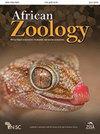了解尼罗河罗非鱼(Oreochromis niloticus)在东非的迁移动态及其生态后果
IF 0.5
4区 生物学
Q4 ZOOLOGY
引用次数: 0
摘要
尼罗河罗非鱼(Oreochromis niloticus)是东非国家(EAC)第二大经济鱼类,仅次于尼罗河鲈鱼(Lates nilotics)。它是东非共同体养殖量最大的淡水鱼类,也是全球养殖量第二多的淡水鱼类。目前,在东非共同体,通过直接放养活动,可能间接通过水产养殖逃亡者,尼罗罗非鱼存在于非本地水体中,被认为是近几十年来观察到的鱼类生物多样性丧失的原因之一。引进的尼罗罗非鱼可能与本地同类物种杂交,促进基因渗入,这可能不利于生物多样性的可持续性。此外,水产养殖中的迁移动态和逃逸可能会导致尼罗罗非鱼种群之间的人工基因流动,损害其基因库和该物种作为渔业资源的可持续性。在目前的工作中,我们回顾了EAC中这些现象的一些例子。此外,我们还探讨了收集遗传数据的重要性,以确定本地和非本地尼罗罗非鱼种群的基线知识,这些知识可用于监测罗非鱼遗传资源的开发、管理和保护计划。本文章由计算机程序翻译,如有差异,请以英文原文为准。
Understanding the Translocation Dynamics of Nile Tilapia (Oreochromis niloticus) and Its Ecological Consequences in East Africa
The Nile tilapia (Oreochromis niloticus) is the second-most economically important fish species in East African countries (EAC), surpassed only by the Nile perch (Lates niloticus). It is the most-farmed freshwater fish species in EAC and the second-most-farmed worldwide. Currently, in EAC, through direct stocking activities and likely indirectly via aquaculture escapees, Nile tilapia are present in waterbodies where it is not native and where it is thought to have contributed to the fish biodiversity loss observed in recent decades. Introduced Nile tilapia may hybridise with native, congeneric species, promoting genetic introgression that can be detrimental to the sustainability of biodiversity. Moreover, the translocation dynamics and escapes from aquaculture can contribute to artificial geneflow between Nile tilapia stocks, compromising their gene pool and the sustainability of the species as a fishery resource. In the current work, we review some examples of these phenomena in EAC. Additionally, we explore the importance of collecting genetic data to define baseline knowledge for native and non-native Nile tilapia populations that can be used in monitoring programmes for development, management and conservation of tilapia genetic resources.
求助全文
通过发布文献求助,成功后即可免费获取论文全文。
去求助
来源期刊

African Zoology
生物-动物学
CiteScore
2.60
自引率
9.10%
发文量
18
审稿时长
>12 weeks
期刊介绍:
African Zoology , a peer-reviewed research journal, publishes original scientific contributions and critical reviews that focus principally on African fauna in terrestrial, freshwater, and marine ecosystems. Research from other regions that advances practical and theoretical aspects of zoology will be considered. Rigorous question-driven research in all aspects of zoology will take precedence over descriptive research. The Journal publishes full-length papers, critical reviews, short communications, letters to the editors as well as book reviews. Contributions based on purely observational, descriptive or anecdotal data will not be considered.
The Journal is produced by NISC in association with the Zoological Society of South Africa (ZSSA). Acceptance of papers is the responsibility of the Editors-in-Chief in consultation with the Editors and members of the Editorial Advisory Board. All views expressed are those of the author and not necessarily those of the Editors or the Department.
 求助内容:
求助内容: 应助结果提醒方式:
应助结果提醒方式:


